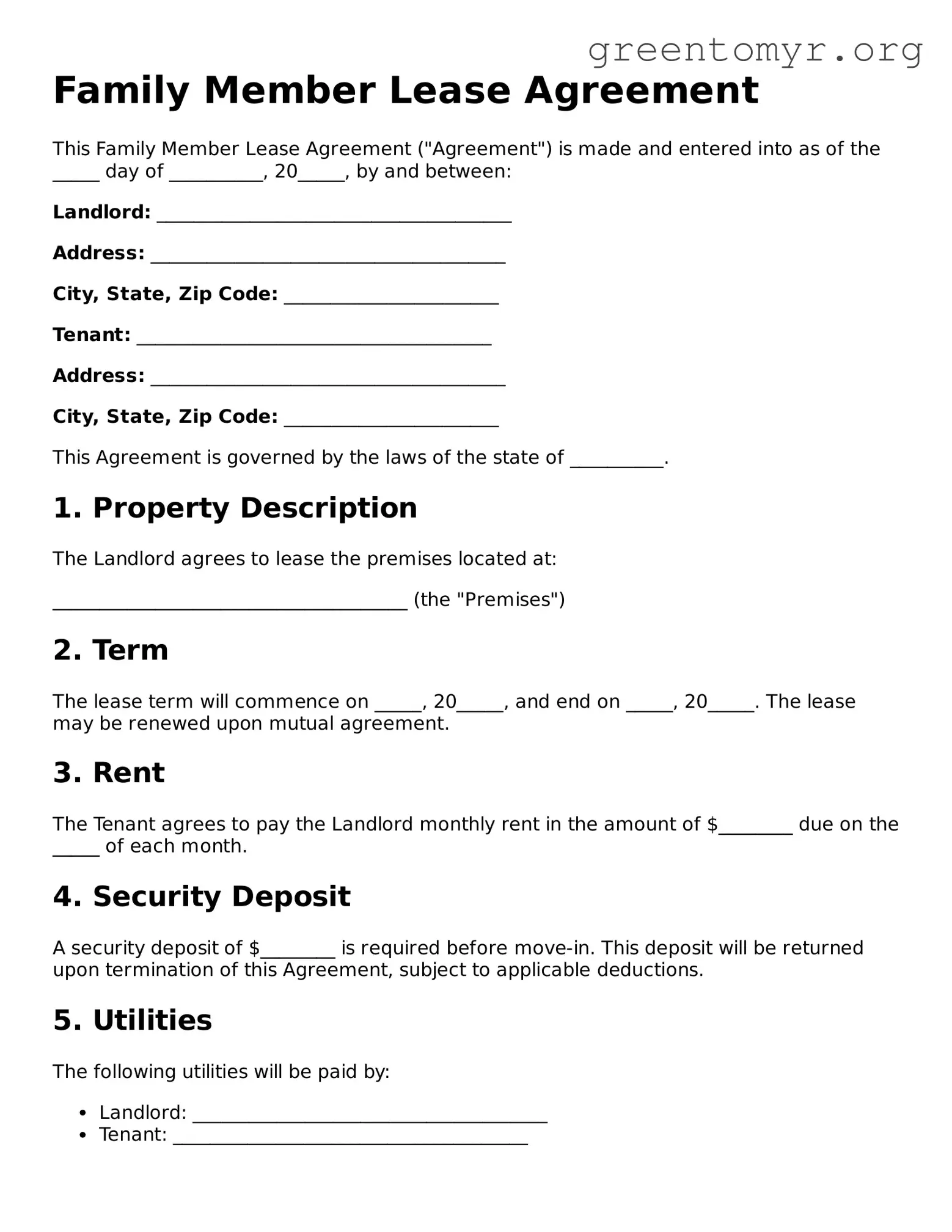Family Member Lease Agreement
This Family Member Lease Agreement ("Agreement") is made and entered into as of the _____ day of __________, 20_____, by and between:
Landlord: ______________________________________
Address: ______________________________________
City, State, Zip Code: _______________________
Tenant: ______________________________________
Address: ______________________________________
City, State, Zip Code: _______________________
This Agreement is governed by the laws of the state of __________.
1. Property Description
The Landlord agrees to lease the premises located at:
______________________________________ (the "Premises")
2. Term
The lease term will commence on _____, 20_____, and end on _____, 20_____. The lease may be renewed upon mutual agreement.
3. Rent
The Tenant agrees to pay the Landlord monthly rent in the amount of $________ due on the _____ of each month.
4. Security Deposit
A security deposit of $________ is required before move-in. This deposit will be returned upon termination of this Agreement, subject to applicable deductions.
5. Utilities
The following utilities will be paid by:
- Landlord: ______________________________________
- Tenant: ______________________________________
6. Use of Premises
The Tenant agrees to use the Premises solely for residential purposes. No illegal activities are allowed on the Premises.
7. Pets
Pets are:
8. Maintenance and Repairs
The Landlord is responsible for:
- Major repairs
- Regular maintenance
The Tenant is responsible for:
- Minor repairs
- Maintaining cleanliness
9. Termination
Either party may terminate this Agreement by providing written notice of at least _____ days to the other party.
10. Additional Terms
______________________________________
Signatures
Landlord Signature: _______________________________ Date: ____________
Tenant Signature: ________________________________ Date: ____________
